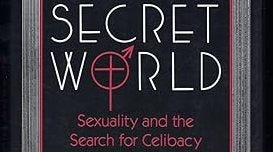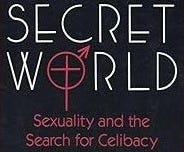A SAD BUT TRUE PRIEST STORY
"Dave" is a composite of different priests. Unfortunately, most Catholics don't want to know the truth about priests like "Dave" because they can't handle the truth.
“Dave” was in the eighth grade when he felt a calling to the priesthood. Having been an altar boy since the third grade, Dave grew up with a sense that God was very close to him. When he served a very early 5:30 am monthly Mass for the nuns in their convent, he would fearlessly trudge through the snow when it was still dark, trusting that God was watching over him.
As devout Catholics, Dave’s parents were proud to have a priest in their family, even if they had to wait twelve years before he would be ordained. In the early 1960s, when there were many Catholic high school seminaries in the United States, Dave enrolled in one in a neighboring state away from the watchful eyes of his parents. If one were to ask Dave if he were a heterosexual or homosexual at the age of 14 when he left his family, he would not have known how to answer. While he made friends with boys and girls in grade school, he never once thought of engaging in any form of sexual behavior.
What neither Dave nor his family realized was that high school seminaries were established to recruit boys to become priests before they “discovered girls.” It was not long before Dave was befriended in the seminary by a priest faculty member who gave him small gifts and who taught him how to play tennis. Without realizing what was happening, Dave was slowly being groomed which in time evolved into a homosexual relationship. Even though Dave interpreted their sexual acts as manifestations of their friendship and love, he knew that he had to keep this activity hidden from his family.
By being introduced to gay sex in an all-male environment during his period of psychosexual development, Dave’s chances of staying and being ordained a priest were significantly higher than a heterosexually formed candidate who might be more inclined to leave and one day marry. Certainly, forgoing having a wife and children in one’s life on this Earth is a far, far greater sacrifice than abstaining from homosexual acts which the Church teaches to be “intrinsically disordered.” During the twelve years that Dave was in high school, college, and major seminaries, he came to accept the fact that he had become a homosexual, a fact supported by relationships he had with other gay seminarians and priests.
After Dave had not been living a celibate life in the seminary, he did not change his behavior after he was ordained, particularly when he had gotten to know a number of priests and even bishops who were sexually active. Because he was able to engage in sexual relations without any consequences before his ordination, and because he viewed gay sex as a form of love and friendship, he proceeded to groom boys in his parish just as he was groomed around the same age in the seminary.
When the priest in the seminary who introduced Dave to gay sex before he could “discover girls” was named a bishop and got Dave appointed to be the vice-rector of a prestigious seminary, Dave became very confident that he too would someday be made a bishop.
Most young victims of sexual abuse do not report what happened to them for decades. Likewise, the boys whom Father Dave groomed and abused before his appointment to the seminary did not report this to their parents or others for many years. When some young men did come forward years after Father Dave had abused them, his bishop, also a homosexual, negotiated out-of-court settlements and had Dave transferred out to another diocese headed by a homosexual bishop with whom he studied at the North American College (NAC) in Rome. While serving in a diocese many states removed from his home diocese, Dave continued to lead an active gay lifestyle outside of his parish where no one knew he was a Catholic priest.
Requesting to be closer to his aging parents, Dave’s bishop allowed him to return to the diocese and had him assigned to a parish far from the one where he abused some of his altar boys. When a State Grand Jury undertook an investigation into clerical sex abuse which prompted more men to come forward claiming to have been groomed and abused by Dave, the bishop was forced under the threat of multiple lawsuits to remove Dave from ministry. Dave moved into a building that was intended to house retired priests. In time, the number of priests removed for predatory behavior outnumbered the priests who were living there in retirement.
When Dave died years after he was removed from ministry, his obituary made no mention of his abuse allegations or out-of-court financial settlements. Dave’s funeral was conducted in his home parish and he was buried near his parent’s grave.
Unfortunately, Dave is only one of tens of thousands of priests who were recruited into the gay seminary culture. Once they were “turned,” they knew they did not want to be outed to their parents, relatives, and friends. This meant that they would stay and spend the rest of their lives living in a closet built by the institutional church.
Many priests like Dave were reported for abuse and removed from ministry. Others were reported, but the allegations were ruled “unsubstantiated” by closeted gay bishops and diocesan officials who, in many cases, were as guilty as the accused priests. Finally, there are many other active homosexual predator priests who have escaped being accused or removed, and who continue to hold very high positions in the hierarchy of the Catholic Church.
While parents were never informed how their sons were being groomed and abused in seminaries, their sexually corrupted sons felt compelled to remain in the institutional Church where they felt safe from being outed and protected by homosexual bishops and chancery officials. Rectors, faculty members, and vocational directors who became bishops, archbishops, and cardinals often made sure that the victims of their homosexual predation were promoted or their abuse covered up, thereby ensuring that their secrets would never be revealed. Straight seminarians and priests who were viewed as threats to outing the priestly homosexual fraternity were not promoted and, in many cases, were covertly or unabashedly encouraged to leave the priesthood; get married; or just die.
Catholics are mistaken if they believe the biggest cover-up on the part of the hierarchy involves the true amount of sexual abuse in the Church. There are two other cover-ups that are even greater: 1) The number of closeted homosexuals in the episcopacy, the priesthood, and the seminaries; and 2) The number of priests who practice celibacy at any given point in time. Catholics who say priests should not be allowed to marry and remain celibate are naive and uninformed to believe that celibacy has actually been observed by most priests since it was mandated in the early twelfth century. Richard Sipe, the late psychotherapist and expert on priestly sexuality, estimated that no more than half of all priests practice celibacy at any given point in time. Furthermore, he documented how no more than 2 percent of priests report having practiced celibacy throughout their entire lives. While many gay men enter the seminary at the invitation of gay bishops and priests without any intention of practicing celibacy, straight candidates are not told what their chances really are of leading lifelong celibate lives.
When one newly ordained celibate straight priest went on his first priestly retreat, a senior priest of the diocese counseled him, “Now that you are ordained, I want to advise you that when you fool around, you should never do it with anyone in your parish.” When one gay priest confided in his bishop that he entered a civil marriage with another man, the bishop said, “Just keep it quiet and avoid being seen together in your parish.” Interestingly, the straight priest later met a woman, and instead of leading a double life, he left the priesthood to marry and have a family. The gay priest, after leading a double life, did not want to continue hiding his gay relationship and also left the priesthood to resettle with his partner in another state. True stories such as these are hidden from the laity who have no idea how difficult it is for priests to practice celibacy.
According to a 2011 study by psychologist Alan P. Bell and the sociologist Martin S. Weinberg, 83% of the homosexual men surveyed estimated they had had sex with 50 or more partners in their lifetime; 43% estimated they had sex with 500 or more partners; 28% with 1,000 or more partners. According to a 2018 study in the Journal of Sex Research, straight men report an average of 14 lifetime sex partners. Given the great difference in the number of sex partners between gay and straight men, it is not surprising how much gay sex takes place in seminaries, and how gay priests are generally far more sexually active than straight priests who may admit to falling in love “once every decade.”
When Father “Frank” was accused and found guilty of abusing a teenage boy, he disclosed to the District Attorney that he himself was abused when he was a seminarian. Sadly, most predator priests were themselves abused like Dave and Frank, and in many cases their abusers became bishops and even members of the College of Cardinals like ex-Cardinal Theodore McCarrick.
If Fathers Dave or Frank were your sons whose lives you entrusted to Church officials only for them to be used as “young meat” by priest seminary officials or older gay seminarians, how might you react? Would you encourage straight men to dedicate their lives to serving an institution that covers up abuse; that hides the predominance of heterophobic closeted gay clergy; and that misleads candidates into believing they will be able to keep the promise of celibacy or vow of chastity they made when they were ordained? These are questions that are never raised with prospective seminarians or their parents. In the meantime, clerical sexual predation and homosexual misconduct continue unabated.
Gene Thomas Gomulka is a sexual abuse victims’ advocate, investigative reporter, and screenwriter. A former Navy (O6) Captain/Chaplain, seminary instructor, and diocesan respect life director, Gomulka was ordained a priest for the Altoona-Johnstown diocese and later made a Prelate of Honor (Monsignor) by St. John Paul II.





